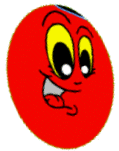Background on the Tu B’Shvat Seder
In the 16th century, Sephardic Kabbalists [mystics] invigorated the holiday by composing a Tu B’Shvat seder, based upon the Pesach seder. (The Sephardic Jews originated from Spain). The Sephardic seder did not catch on among Ashkenazic Jews.
The Tu B’Shvat seder is loosely based on the Pesach seder. In particular, just like the Pesach [Passover] seder, there are four glasses of wine drunk during the seder. At the Tu B’Shvat seder, however, the color of the wine in each glass is varied. The first cup is all white wine; the second is mostly white mixed with some red; the third is mostly red mixed with some white; and the fourth is all red wine. Some substitute blush and rose for the middle two cups of wine as these are “mixed” colors already.
There are several variations on the seder for Tu B’Shvat, these vary according to tradition. The seder that we present is a combination of many of these and is an example.
What you need for the Tu B’Shvat Seder
 |
White Wine or Grape Juice |
 |
Blush Wine (white zinfandel) or Grape Juice |
 |
Rose Wine (Cabernet Blanc or Zinfandel) or Grape Juice |
 |
Red Wine (Cabernet Sauvignon, Bordeaux or burgundy) or Grape Juice |
15 kinds of fruits from Israel
Fruit with a hard outer shell
- Almonds
- Walnuts
- Pecans
Fruit with an inner pit
- Dates
- Olives
- Cherries
- Plums
Fruit with an outer shell and inner pit
- Carob
- Avocado
- Pomegranate
- Orange
Fruit that is entirely edible
- Figs
- Raisins
- Strawberries
- Grapes
Other things for your Seder
- Wheat crackers
- Nut cracker
- Song sheets for each person
- Hagaddot for each person
If the gathering is small you can have a large center plate with all of the 15 different kinds of fruits, if it is large you may want to have individual plates for each person.

